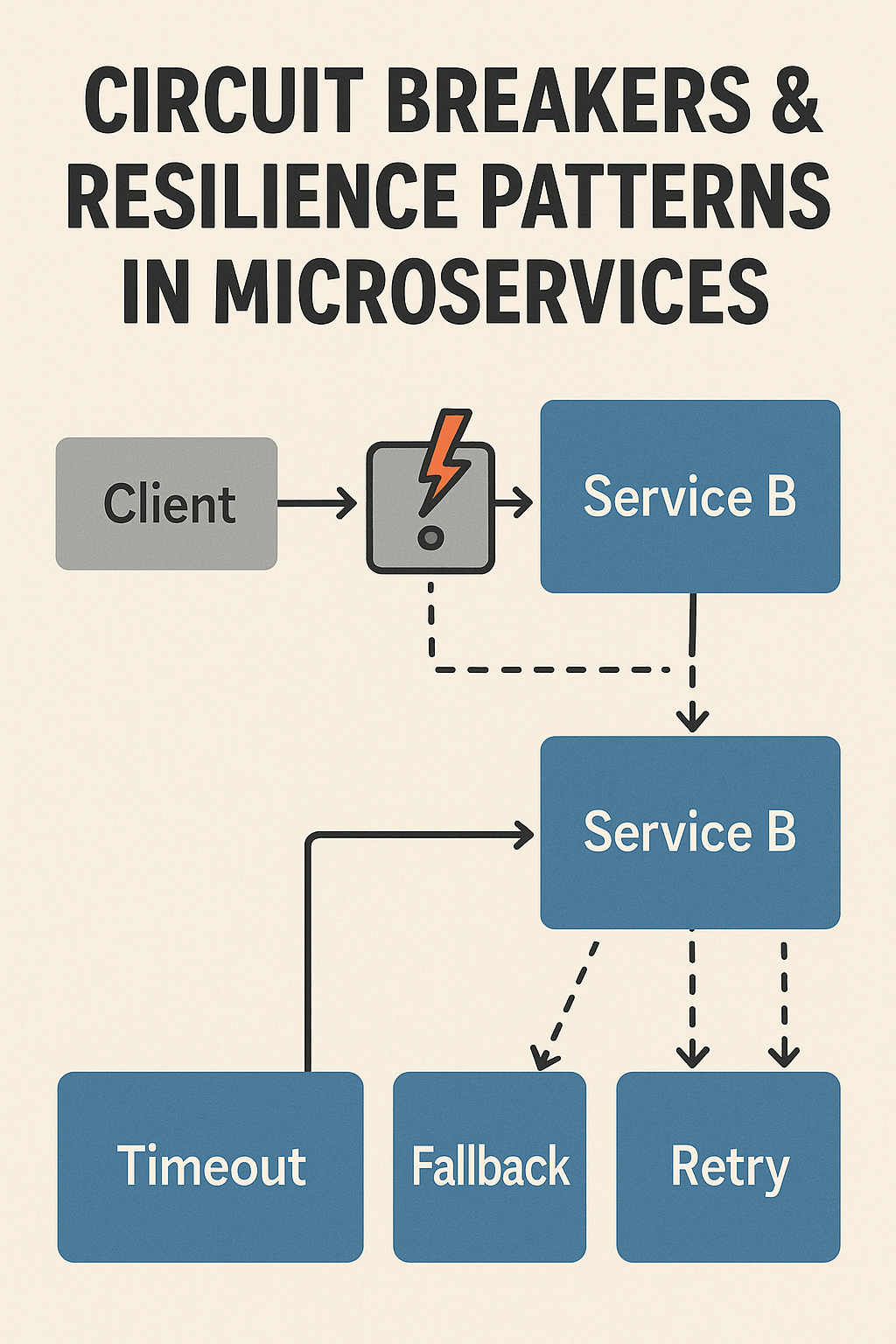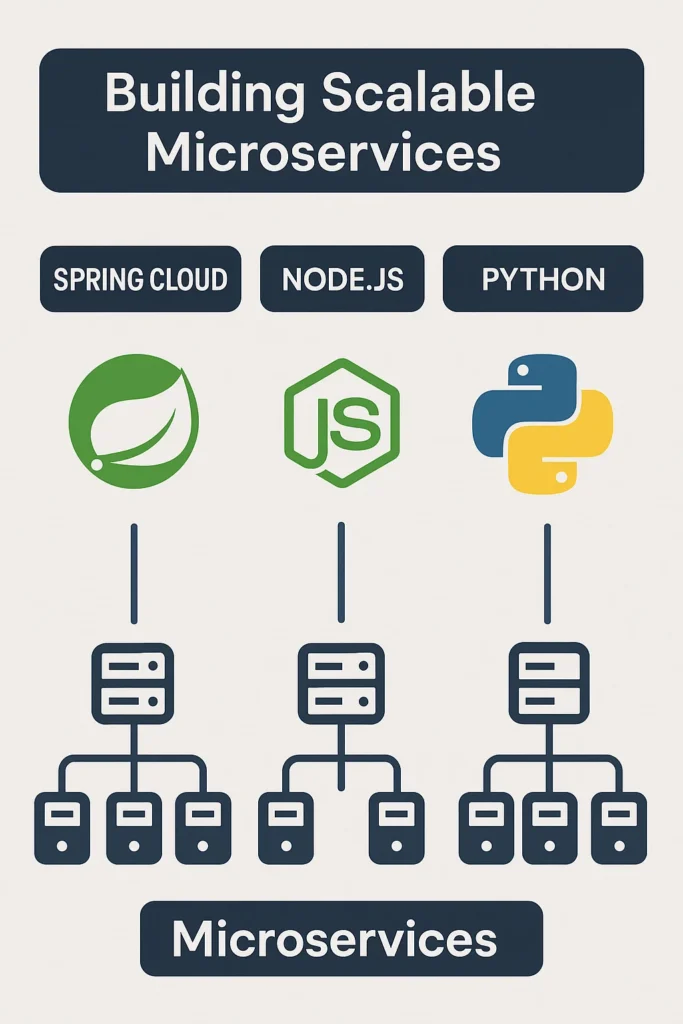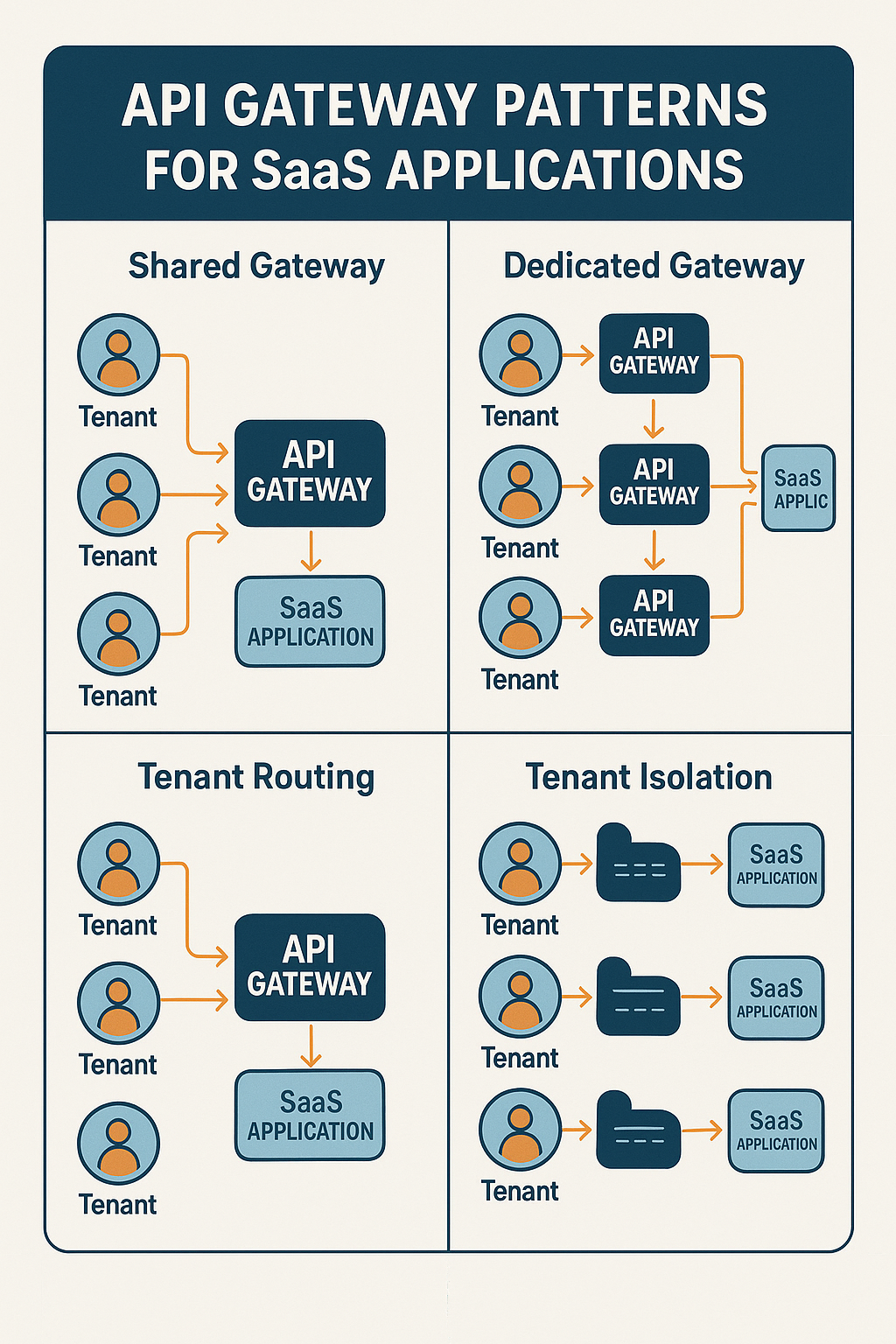
Introduction
In a microservices architecture, services depend on each other. If one service fails or slows down, it can quickly affect the rest of the system. That’s where circuit breakers and resilience patterns come in. They help services handle failures gracefully, reduce downtime, and keep the overall system stable.
This post explains what circuit breakers are, why they’re important, and how to combine them with other resilience patterns.
What is a Circuit Breaker?
A circuit breaker works like an electrical switch. If a service call keeps failing, the breaker “opens” and stops sending requests to the failing service for a while.
States of a circuit breaker:
- Closed: Normal operation, requests flow normally.
- Open: Requests are blocked after repeated failures.
- Half-open: A few test requests are allowed to check if the service has recovered.
This prevents overwhelming a failing service and avoids wasting resources on repeated timeouts.
Why Circuit Breakers Matter
- Protect healthy services from being slowed down by failing ones.
- Improve user experience by failing fast instead of waiting for timeouts.
- Allow recovery once the failing service comes back online.
- Increase resilience in distributed systems where failures are expected.
Other Resilience Patterns in Microservices
Retry with Backoff
Automatically retry failed requests, but wait a bit longer between attempts (exponential backoff). Prevents flooding a service that’s already struggling.
Bulkhead Pattern
Divide resources (like thread pools or connections) so one failing service can’t use them all and bring down others.
Fallbacks
Provide a backup response (cached data, default value, or partial result) when a service isn’t available.
Timeout Settings
Don’t let a request hang forever. Set reasonable timeouts so failures are detected quickly.
Rate Limiting
Limit how many requests a service can receive at once to avoid overload.
Best Practices
- Use libraries like Resilience4j (Java/Spring), Polly (.NET), or middleware for Node.js/Python.
- Monitor circuit breaker state changes with observability tools.
- Tune thresholds (failure rate, timeout duration) for your environment.
- Combine multiple patterns for stronger resilience.
Conclusion
Resilience is not about avoiding failures—it’s about handling them well. Circuit breakers and resilience patterns make microservices more reliable, protect user experience, and keep systems stable even under stress.
For more on building reliable distributed systems, see Designing Event-Driven Microservices with Kafka. You can also explore the official Resilience4j documentation to learn how to implement circuit breakers in Java-based microservices.


